The direct quotes in this story are from a taped interview of Katy when she was 75 years old. The tape and transcript of her voice is a priceless treasure to her family.
Bringing in the Wheat
As a young girl, Katy worked with her mother and five brothers from dawn to dusk in the wheat field — both in the spring and in the fall. First thing in the morning, in both seasons, she would fill the large jugs with cold well water, wrap them in burlap to keep them cool, and carry them to the field where everyone was working. The water jugs were set up in one corner of the field. In the Dakota heat, their thirst would have to wait until they worked a full revolution of the forty-acres to get back to the spot where the water jugs stood.
“In North Dakota, we planted the wheat in the spring, like in March or April. We had a dry land farm. There was no river and no irrigation in those days. The farm work was done with horses at that time. Dad and my older brothers harnessed them up. First they pulled the plow back and forth across the field and then they pulled the seeder. Our horses were Ole, Olga, Kate, Tony and Ruby. They were not pets, they were hard working animals.”
The dry land crops of the Dakotas include wheat, oats, corn, and other grasses that produce grains. During the growing season, the grain uses the winter water stored in the soil; there was no rainfall or irrigation. Dry land crops also included beans, sunflowers, and melons, which Katy’s family always had in their kitchen garden.
“In the early fall, when the wheat was ripe, it was harvested with what was called a binder and that was pulled by the horses too. There was twine laced through the binder in some way, and as it cut the wheat off, the twine would tie the wheat stalks into bundles, which were called sheaves. The binder would then kick the bundled sheaves off to the side in windrows. My mother and five brothers and I would follow all around the forty acres making shocks of the sheaves. We would stand up maybe eight or so bundles, and sort of lean them against each other. The grain was facing up so it would dry out. This was called shocking the grain. Oh, that was hot, heavy work, shocking the grain all day long. The whole family was at it.”
“Later on, when the wheat had dried and it was time for threshing, I would sit by the side of the road waiting for our turn to have the huge threshing engine come to our farm. When it was on its way, all of us would go out and pick up the shocks and load the wagon as high as our pitchforks could reach. Then we brought the wagon on over to the old gas-powered threshing machine. One bundle at a time was pitched into the thresher and that separated the grain from the straw. The straw blew out on one side and made a big straw pile, and the grain went out the other side and into the grain wagon. We worked long hours in the heat. Dad paid us kids 10¢ a day.”
Threshing season was a time of hard labor for the whole family. One of Katy’s jobs during the threshing, was to put a bench in the yard and haul pails of water, towels and soap for the threshers to wash up before the noon meal.
“My mother and I cooked huge lunches for the threshing crew. Roast chickens, potatoes, corn, beans, melons, fresh baked bread with home-churned butter. And plenty of cider and lemonade. Feeding them was part of the deal, and they liked our cooking!”
“We would take a whole wagon load of grain to be milled into flour. Sometimes Dad let me drive the grain wagon to the mill with a couple of horses pulling it. And, oh my God! There would be ten 100-pound sacks of flour that we would use from one year to the next. We had some of the wheat milled into breakfast food, too. They called it farina at that time. I remember that farina so well, it was like Cream of Wheat. We really liked that stuff.”
Even at the age of 90, Katy retained vivid memories of working in the wheat during her youth. The physical memory was so real and present in her when telling her harvest stories, we could see her posture wilt into one of complete exhaustion. I swear, we could almost see her perspire as if she were working in that North Dakota heat even then.





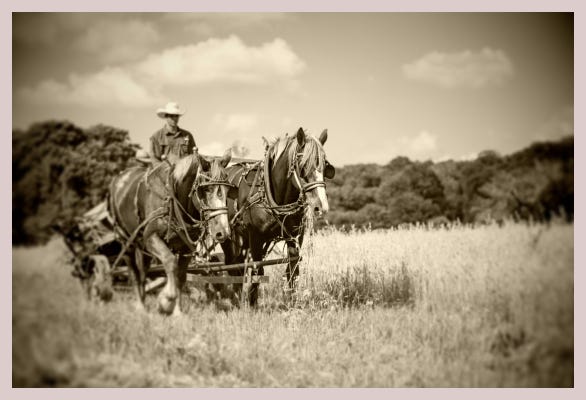
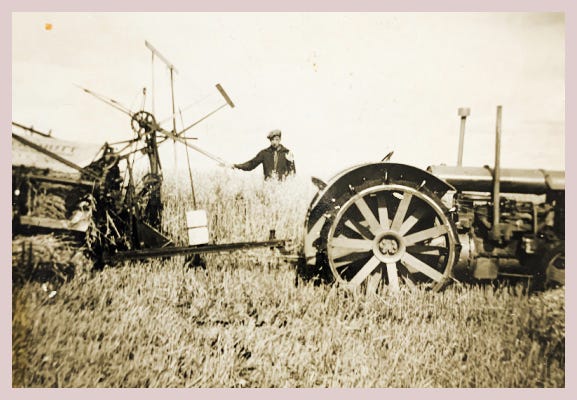
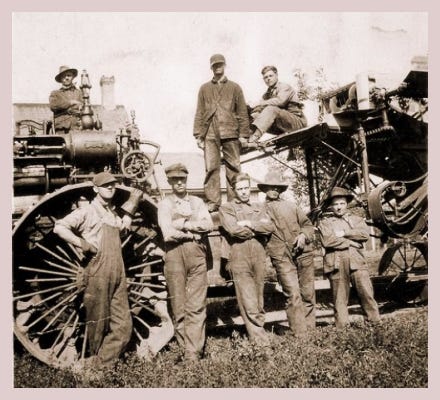
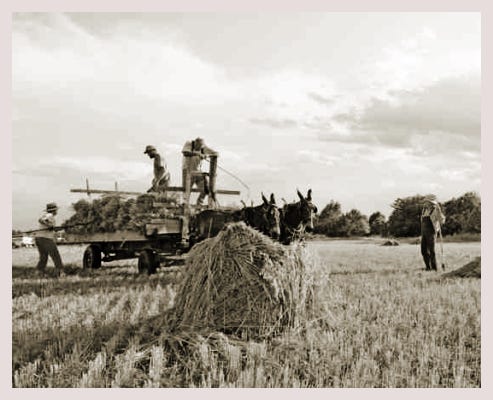
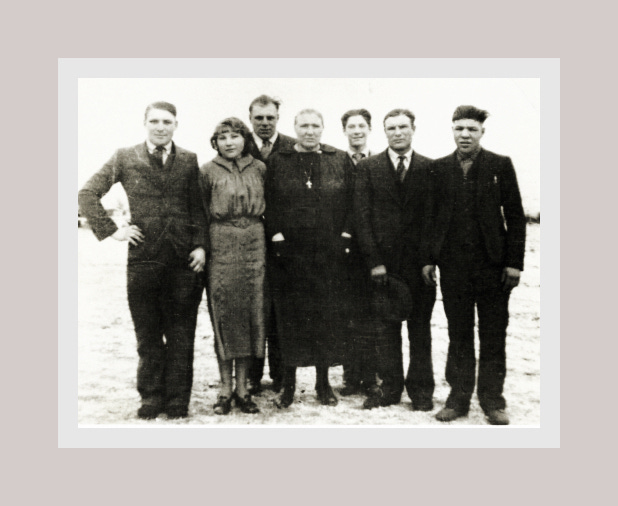
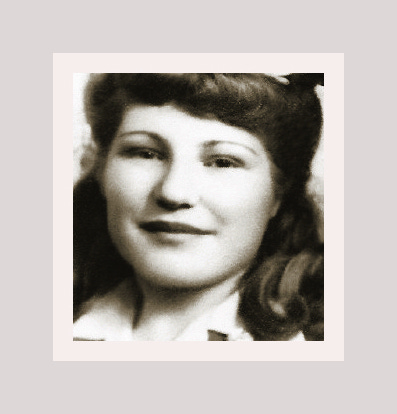
What a great story, so glad you captured it for posterity! My grandfather rode his motorcycle out west and told stories about working in those Dakota wheat fields. There was an old thresher on the farm I worked on when I was a kid. The farmer decided we would cut it up for scrap. But the cutting torch set the thing ablaze, and it was right next to the barn! With the flames quickly growing higher, he backed up a tractor and we took a chain around the front tongue, hooking it up to the tractor. He towed it as far away from the barn as he could before the roaring blaze threatened to roast him and the tractor. Wow. We watched it burn. The next day we hauled all that scrap iron to the junkyard. He must have got a pretty penny for it because he bought me a milk shake on the way back to the farm.
Thank you for sharing these memories, Sharron. Reading this makes me reflect and see how easy we have it today - in so many ways!